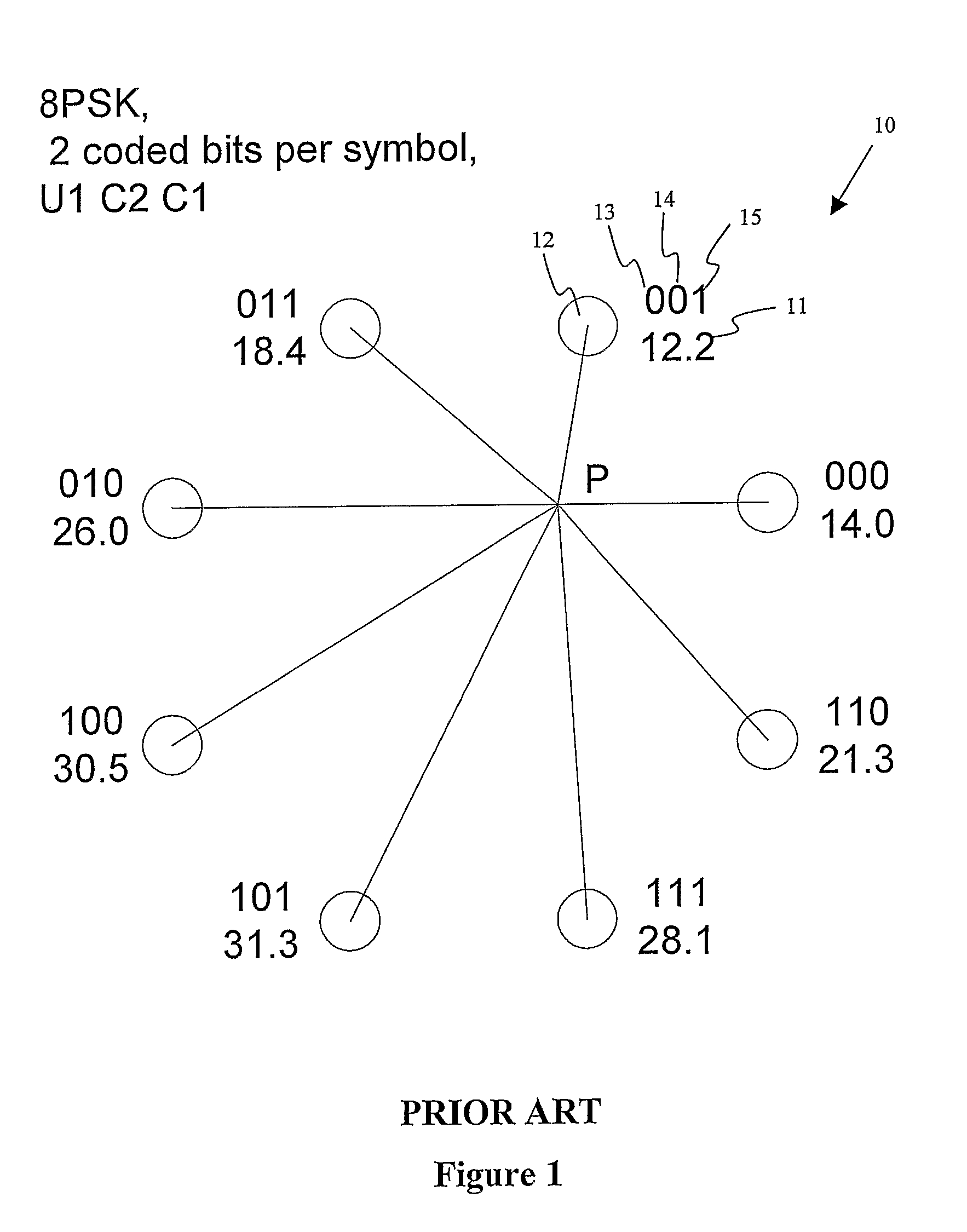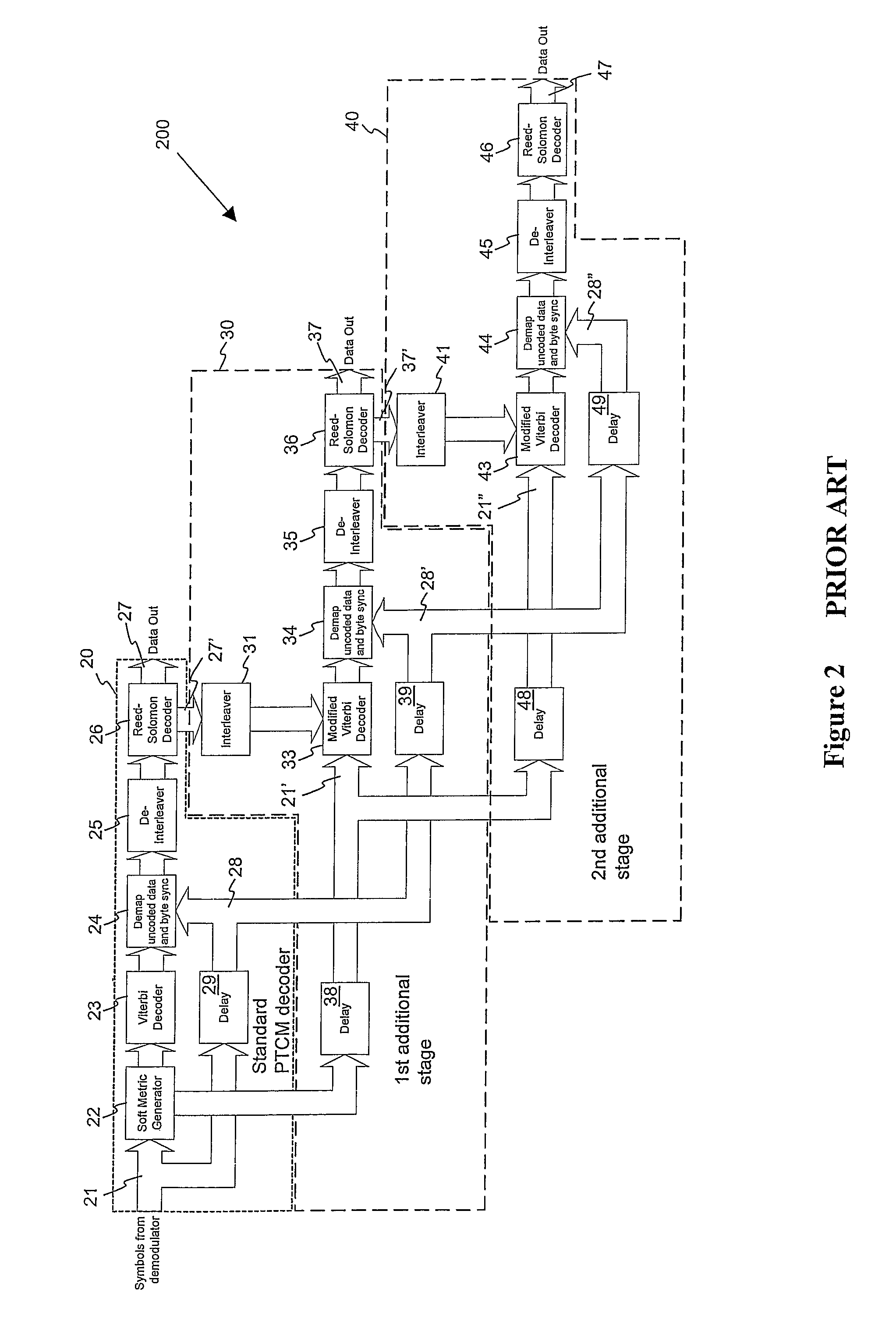Decoding a concatenated convolutional-encoded and block encoded signal
a convolutional encoded and block encoded technology, applied in the direction of coding, amplitude demodulation, code conversion, etc., can solve the problem that the prior art calculation of soft metrics does not take into account the known corr of decoded bits, so as to improve the decoding of higher-order modulated signals and reduce the output bit error rate (ber)
- Summary
- Abstract
- Description
- Claims
- Application Information
AI Technical Summary
Benefits of technology
Problems solved by technology
Method used
Image
Examples
Embodiment Construction
[0034]FIG. 1 shows an 8PSK constellation 10 with two coded bits 14, 15 and one un-coded bit 13 per symbol, together with a distance 11 from each point 12 on the constellation to a received constellation point P. In the Figure, U1, C2, C1 denote respectively the un-coded bit 13, and the two coded bits 14, 15 used in the mapping of the constellation. Thus the constellation point 011 represents U1=0, C2=1, C1=1. To find a conventional soft metric for c1 given P and a given noise model, it is necessary to compute a likelihood of receiving point P given all possible transmitted symbols. Viterbi decoding is known to work well when the soft metrics represent the logarithm of the likelihood of the received signals. Typically the noise model is Gaussian with some variance V, which represents a power of the noise. To compute the soft metric c1 it is necessary to compute the likelihood of the received point P given that C1=0, which is done by adding probabilities that the point P was received ...
PUM
 Login to View More
Login to View More Abstract
Description
Claims
Application Information
 Login to View More
Login to View More - R&D
- Intellectual Property
- Life Sciences
- Materials
- Tech Scout
- Unparalleled Data Quality
- Higher Quality Content
- 60% Fewer Hallucinations
Browse by: Latest US Patents, China's latest patents, Technical Efficacy Thesaurus, Application Domain, Technology Topic, Popular Technical Reports.
© 2025 PatSnap. All rights reserved.Legal|Privacy policy|Modern Slavery Act Transparency Statement|Sitemap|About US| Contact US: help@patsnap.com



